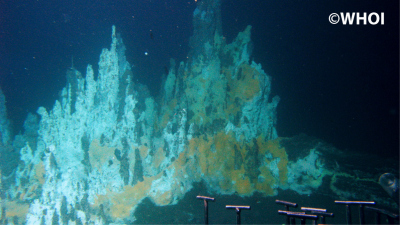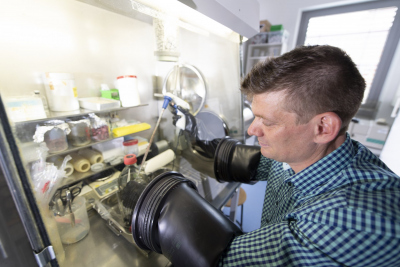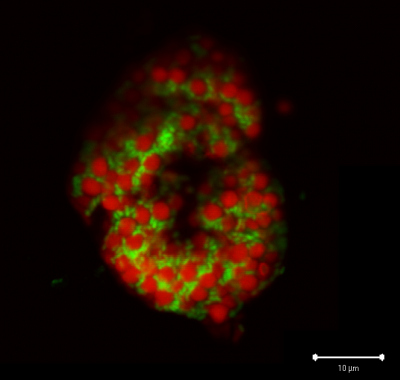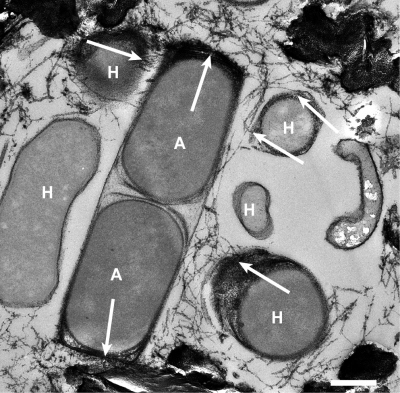- Startseite
- Gunter Wegener
Dr. Gunter Wegener |
|
Gruppe: |
|
|
Telefon: |
|
|
E-Mail: |
|
|
Raum: |
MPI 1338 |
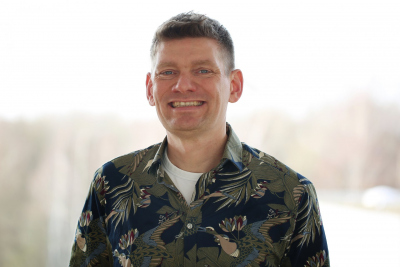
I am a senior scientist affiliated to the Organic Geochemistry group of Kai-Uwe Hinrichs and the Deep-Sea Ecology group a the Max Planck Institute for Marine Microbiology.
I can also be reached with this email address: [Bitte aktivieren Sie Javascript]men.de and [Bitte aktivieren Sie Javascript]
Research interests
I am a marine biogeochemist and microbiologist and I seek a comprehensive understanding of marine microorganisms and their influence on local and global element cycles. I detect and describe microorganisms in their environment, culture the organisms, and investigate their metabolism. Together with my research team of currently three PhD students and one technician, I focus on the role of archaea in the anaerobic oxidation of methane and other hydrocarbons. We culture these organisms from hydrothermal vent and cold seep sediments and hydrocarbon reservoirs, we study their function using state of the art –omics approaches, and perform physiological experiments and biochemical assays. To validate metabolic pathway we combine stable isotope labeling techniques with high-resolution mass spectrometry. We also assess the lipidome of alkane-oxidizing archaea and their partners, and quantify the formation of lipids and novel carbon species in alkane-metabolizing microorganisms.
Research projects
New hydrocarbon-degrading archaea: From their detection in environmental samples towards cultivation
Collaborators: Andreas Teske (Univ. of North Carolina, USA), Fengping Wang, Yinzhao Wang (Jiaotong University, Shanghai, China), Lei Cheng (CAAS, China), Ida Steen (Univ. Bergen, Norway), Florence Schubotz (MARUM)
Deep in the seafloor, anaerobic microorganisms degrade oil and natural gas. The individual compounds of this matter are chemically inert, and their degradation requires specific enzymes. Marine hydrothermal vents and cold seeps emit gas and oil surface sediments, thus these structures display windows into the processes deep in the deep subsurface. We identify and quantify hydrocarbon-degrading microorganisms by sequencing environmental DNA (metagenomics) and microscopic techniques fluorescence in situ hybridization (FISH/ CARDFISH). We focus on the cultivation of anaerobic alkane-degrading archaea, a particular challenge because they have doubling times of weeks to months. In the last decade we established the world’s largest collection of anaerobic alkane-degrading archaea.
Key publications:
Holler et al., 2011 Laso-Pérez et al., 2016, Laso-Pérez et al., 2018, Laso-Pérez et al., 2019, Wang et al., 2019;, Zhou et al. 2022, Benito Merino et al., (in press), Review paper: Wegener et al., 2022
Metabolism of alkane-degrading archaea
Collaborators: Tristan Wagner (MPI Bremen), Julius Lipp, Lars Wörmer, Kai-Uwe Hinrichs (MARUM), Victoria Orphan (Caltech, Pasadena, California)
The cultured alkane-degrading archaea allow unique studies on their metabolism. Alkane-oxidizing archaea face the challenge of degrading the chemically inert hydrocarbons without the oxidative power of molecular oxygen. To activate these substrates the organisms use new variants of methyl-Coenzyme reductase, an enzyme class originally described to catalyze methane formation. The further oxidation of these substrates involves completely uncharted biochemistry. Most of these archaea form syntrophic interactions with partner bacteria.
We study the activation and further oxidation of alkanes in archaea using tailored experiments combined with high-resolution mass spectrometry. In collaboration with Dr. Tristan Wagner, we extract key enzymes of the organisms and resolve their structure and function by protein crystallization.
In most marine settings anaerobic alkane oxidation in archaea is coupled to sulfate reduction in partner bacteria. Both cell types interact by nanowire-like cell appendages. The anaerobic methane-oxidizing cultures are unusually black. We recently characterized the black matter as an amorphous form of elemental carbon and confirmed its microbial origin. This is the first demonstration of elemental carbon formation by living organisms.
Key publications: Wegener et al., 2015, Nature, Wegener et al., 2016 Front. Microbiol., Hahn et al., 2021, Science
Resolving isotopic signatures produced by hydrocarbon-degrading microorganisms
Collaborators: Jonathan Gropp and Itay Halevy (Weizmann Institute, Rehovot, Israel), Shuhei Ono (MIT)
Microbial turnover alters the isotopic compositions of substrates. Canonically, microbial reactions prefer the light isotopomers (for methane 12CH4), the remaining substrates are enriched in heavier isotopomers (i.e. 13C1H4, 12C1H32H). In contrast, the anaerobic oxidation of methane often leaves 13C-depleted methane. We study isotopic signatures of methane in the subsurface, and perform culture experiments and isotope model to explain these observations.
Yoshinaga et al., 2014, Wegener et al., 2021, Ono et al. 2021
Influence of hydrothermal vents of Microbial activity in the deep oceans
Collaborators: Vera Schlindwein, Antje Boetius (AWI, Bremerhaven, Germany), Massimiliano Molari, Anke Meyerdierks (MPI Bremen), Wolfgang Bach (Univ. Bremen),
Most of the deep oceans are low-energy environmenst where microorganisms depend on the scarce flux of organic matter from the surface waters. In contrast, deep hydrothermal vents emit high concentrations methane, hydrogen gas, reduced sulfur compounds and metals which enrich in hydrothermal plumes. There these compounds display potential energy-rich substrates of microorganisms. We explore microbial activity hydrothermal vents around the globe, study the microorganisms inhabiting the plumes, and measure the consumption of reduced compounds in experiments.
